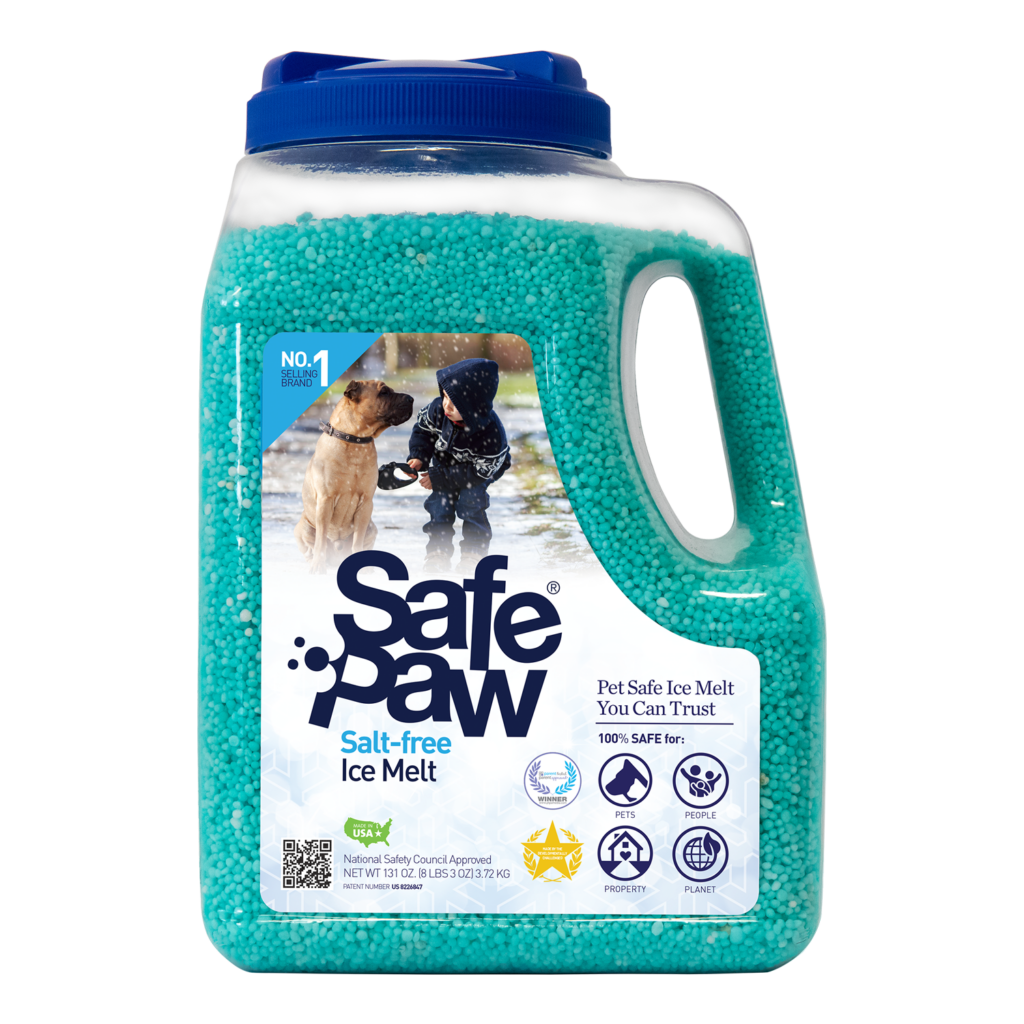Pros And Cons Of Using Salt On Street Roads During Winter

You’re probably familiar with road salt if you live in a city that gets a lot of snow and ice. Road salt is table salt in its natural state. On the other hand, table salt undergoes a lengthy purifying procedure, whereas rock salt does not. As a result, rock salt is brown or grey because it still contains impurities.
We all know that rock salt comes with huge disadvantages for property, vehicles, and the environment. For example, can we use it as an ice melter for new concrete even though it melts ice? No, we cannot. Let us understand more about rock salt’s advantages and numerous disadvantages.
What Does Salt for Winter Do to Snow?
Salt, when applied to snow, initiates a process called salt dissolution. It works by lowering the freezing point of water, causing the snow and ice to melt at a lower temperature than they would under normal circumstances. This, in turn, helps turn the hazardous ice and snow on roads into slush, making it easier to plow and safer for vehicles to navigate.
Why Is Salt Used on Icy Roads?
The primary reason for using salt on icy roads is to improve road safety. By melting snow and ice, salt helps prevent or reduce the formation of dangerous ice patches that can lead to accidents and road closures. This makes winter travel significantly safer for motorists.
When Does Salt Not Work on Roads?
While road salt is effective in most winter conditions, it becomes less effective as temperatures drop. When the temperature falls below approximately 15°F (-9.4°C), salt’s ability to melt ice significantly decreases. In extremely cold conditions, alternative de-icing methods such as sand or ‘Traction Magic’ may be required.
Get ready for winter with Traction Magic instant grip on snow and ice
Road Salt vs. Table Salt
Road salt, often referred to as rock salt, is not the same as the table salt you use in your kitchen. Road salt consists of larger crystals and is more effective at breaking up ice on road surfaces.
Table salt, in contrast, is finer and dissolves more rapidly, making it less suitable for melting ice on roads.
Advantages Of Rock Salt
The most significant advantage of salt is that it makes roadways safer. What is the mechanism behind it? The snow beneath the roads is compacted when vehicles pass over it. It then adheres to the pavement, making snow plow removal harder.
On the other hand, road salt forms a layer of “brine” between the snow (or ice) and the road, preventing the snow from clinging to the surface.
Disadvantages Of Rock Salt
Beyond the purchase and delivery of road salt, several other expenditures are associated with its use. For example, road salt leads to automotive corrosion and can harm buildings like bridge decking. In addition, excessive use of salt can harm the environment.
Because salt dissolves in water, the salt concentration in groundwater rises. In addition, road salt contains sodium, altering soil pH and making it less porous.
Salt can harm the vegetation along the sides of roadways. If the salt level of the water and soil is too high, trees, shrubs, plants, and grasses can deteriorate.
The more road salt comes into contact with your vehicle, the rustier it will get. Water from precipitation comes into touch with metal car parts, releasing oxygen and carbon dioxide. In addition, road salt contains free-floating ions that come into contact with water. These ions accelerate the creation of iron oxide. The presence of salt and water accelerates the rusting process.
Get ready for winter with Traction Magic instant grip on snow and ice
Traction Magic Will Erase Your Worries
Traction Magic is salt-free and entirely safe for the environment. When you use Traction Magic, it starts working right away. As a result, it avoids falls on slick surfaces around your home or business or while driving, including your driveway, sidewalk, deck, and even your roof.
There is no safe chloride ice melter for new concrete, but this product will keep you safe from slip and fall and not damage your new concrete. In addition, it will not rust or damage any of your home’s or business components.
It reduces on-site injuries, accidents, and lawsuits. In addition, this traction agent will keep your business safe and accessible during winter.
Moreover, it gives your car tires quick traction on ice and snow; having Traction Magic in your automobile will provide you with stable footing during winter driving. Even though there are natural ways to melt ice, they can be ineffective and messy.

Ice Grip and Black Ice: The Hidden Risks of Road Salt
While road salt can enhance traction on winter roads, its limitations become especially clear when drivers encounter black ice. This nearly invisible layer forms when moisture refreezes quickly on the pavement, often catching motorists off guard. Why do they call it black ice? Because it blends with the asphalt, making it difficult to detect until it’s too late. Unlike regular slush or packed snow, black ice offers no visual cues—just slick danger.
Even more concerning is what are the most common places where black ice forms: under bridges, shaded areas, and low-lying roads where cold air settles. In these zones, traditional salt loses its edge, especially as temperatures plunge below its effective range. That’s when ice grip becomes critical—not just the ability to melt, but the ability to grip and prevent slips in real-time.
Instead of relying solely on melting action, products like Traction Magic offer a superior solution. They don’t wait to work—they bind to the ice immediately, creating a grippy surface where tires and boots can securely land. No corrosive runoff. No waiting. No guessing.
As for how to make black ice cubes—leave that to mixologists. On the road, black ice is no cocktail ingredient—it’s a hazard that requires serious traction solutions.
Why Ice Grip Beats Ice Melt in Extreme Cold
In severe winter conditions, especially when temperatures drop below freezing, relying solely on melting ice isn’t enough. Road salt becomes ineffective, and delays in melting increase the risk of slips and accidents. That’s where true ice grip becomes essential. Products like Traction Magic don’t wait for chemical reactions—they provide instant traction by physically bonding to slick surfaces. This immediate action can prevent injuries, collisions, and disruptions, especially in high-traffic areas or during unexpected black ice formation. When you need reliable footing fast, a grip-based solution offers far more control than traditional melting agents can. Would you like me to reformat the entire article with this extension inserted, or is this good as a drop-in section before the conclusion?
Conclusion
Traction is about control. And control in winter isn’t achieved by simply melting ice—it’s about immediate response, real-time grip, and eco-conscious care. While salt may temporarily improve traction, its drawbacks—from corrosion to ineffectiveness in black ice zones—make it a less reliable long-term solution. Traction Magic redefines winter safety by prioritizing ice grip over ice melt. It’s fast-acting, residue-free, environmentally sound, and works in places where rock salt fails. Whether you’re facing slippery sidewalks or surprise black ice on a country road, choosing Traction Magic means choosing smarter, safer winters.
FAQs
Other Ice Melt Products
Safe Paw
The Original and the #1 Pet and Child Safe Ice Melt for over 20 years. Guaranteed environmentally safe – will not harm waterways and sensitive wetlands. Safe Paw can change how winter affects our planet.

Safe Thaw
Imagine an ice melt you can put down and never worry about. It won’t harm pets, kids and your property. That’s Safe Thaw. Unlike anything else on the market, Ice and Snow Management You Can Trust.
